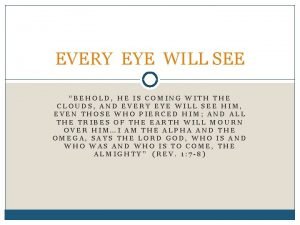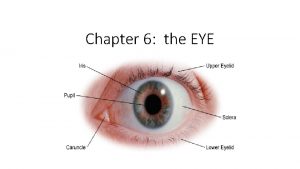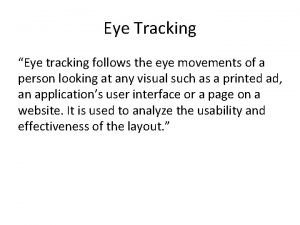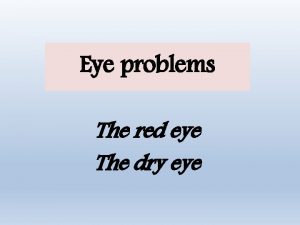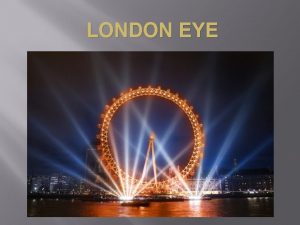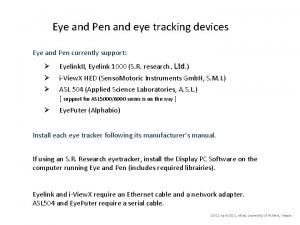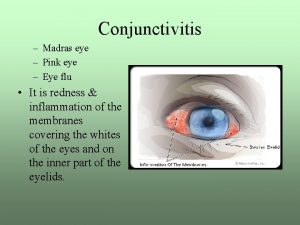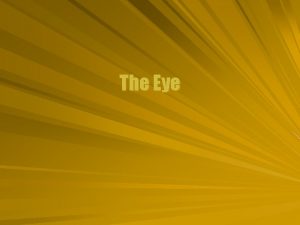Chapter 6 the EYE The Eye The eye









- Slides: 9

Chapter 6: the EYE The Eye

The eye has 3 layers: The outer layer • tough, white tissue, • called the Sclera • where it covers the iris it is transparent and is called the Cornea

The middle layer: muscles and blood vessels The muscles support: • the iris (colored part) • that controls how much light enters through the hole called the pupil • and the lens • That focusses the image on the Retina (the inner layer) • Refraction is ability of the eye to bend light rays so that they can be focused on the retina

Measuring Distance Visual Acuity • Visual acuity refers to sharpness of Vision • Myopia • Near sighted – you can see near • Astigmatism • Cant see clearly near or far • Hyperopia • Far sighted

A DVA of 20/30 • Top number is always 20 • How far was the patient from the eye chart? 20 feet • That is how far everyone stands • The bottom number is where the • At what distance would a person with normal acuity be able to average person would see that read this line? 30 feet line from if they moved.

Snellen “tumbling E” eye chart • What type of patient would warrant use of the Snellen “tumbling E” eye chart? • Someone who can’t read

Near visual acuity • Conducted with the patient holding the test card. • How far away would you hold the test? • About arm’s length (18 inches)

congenital and acquired • congenital • “Born with” • acquired • Acquired it later in life. • color vision defects

Average vision is 20/20 • . Who has better vision: someone with 20/40 or someone with 2/15? • 2/15








